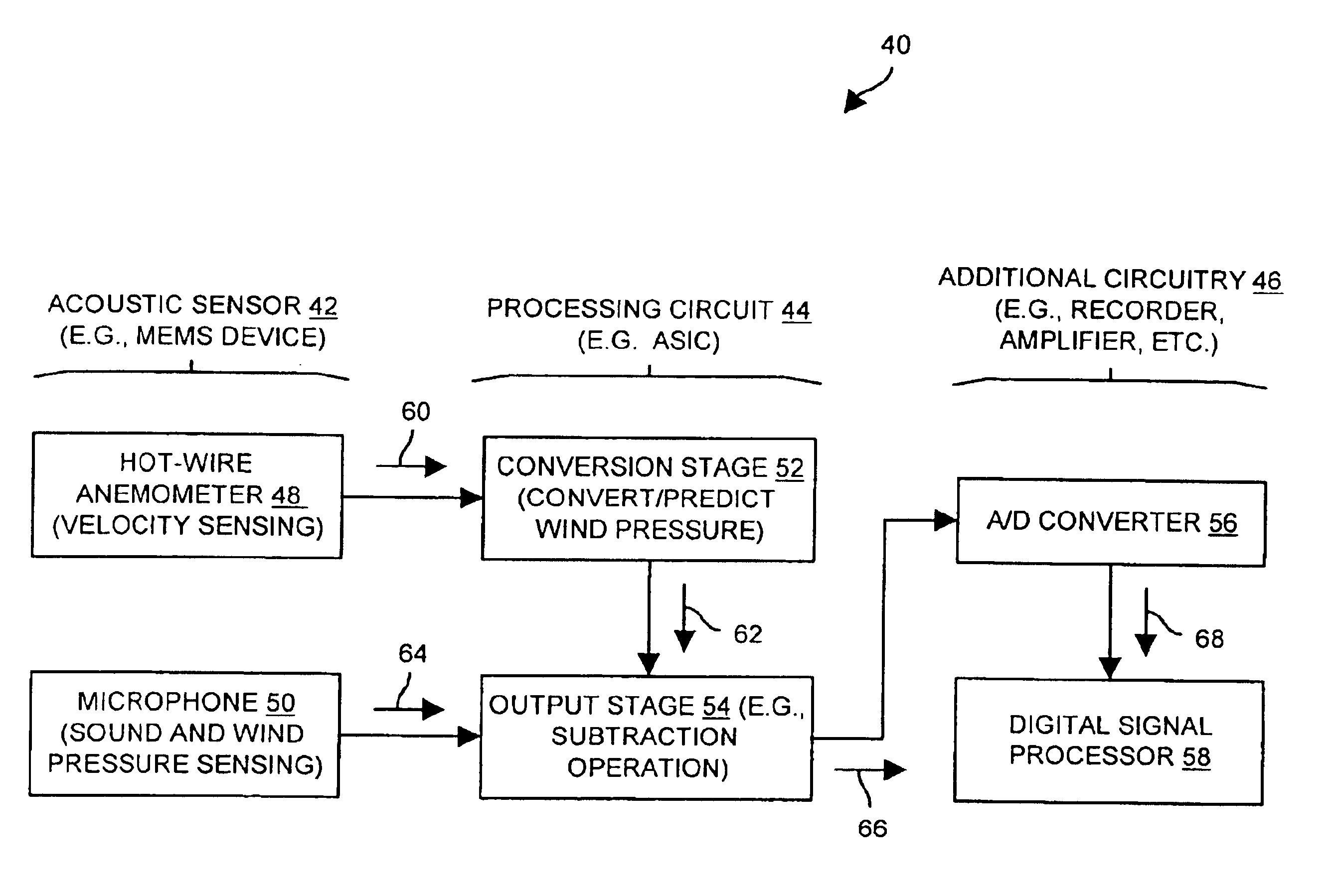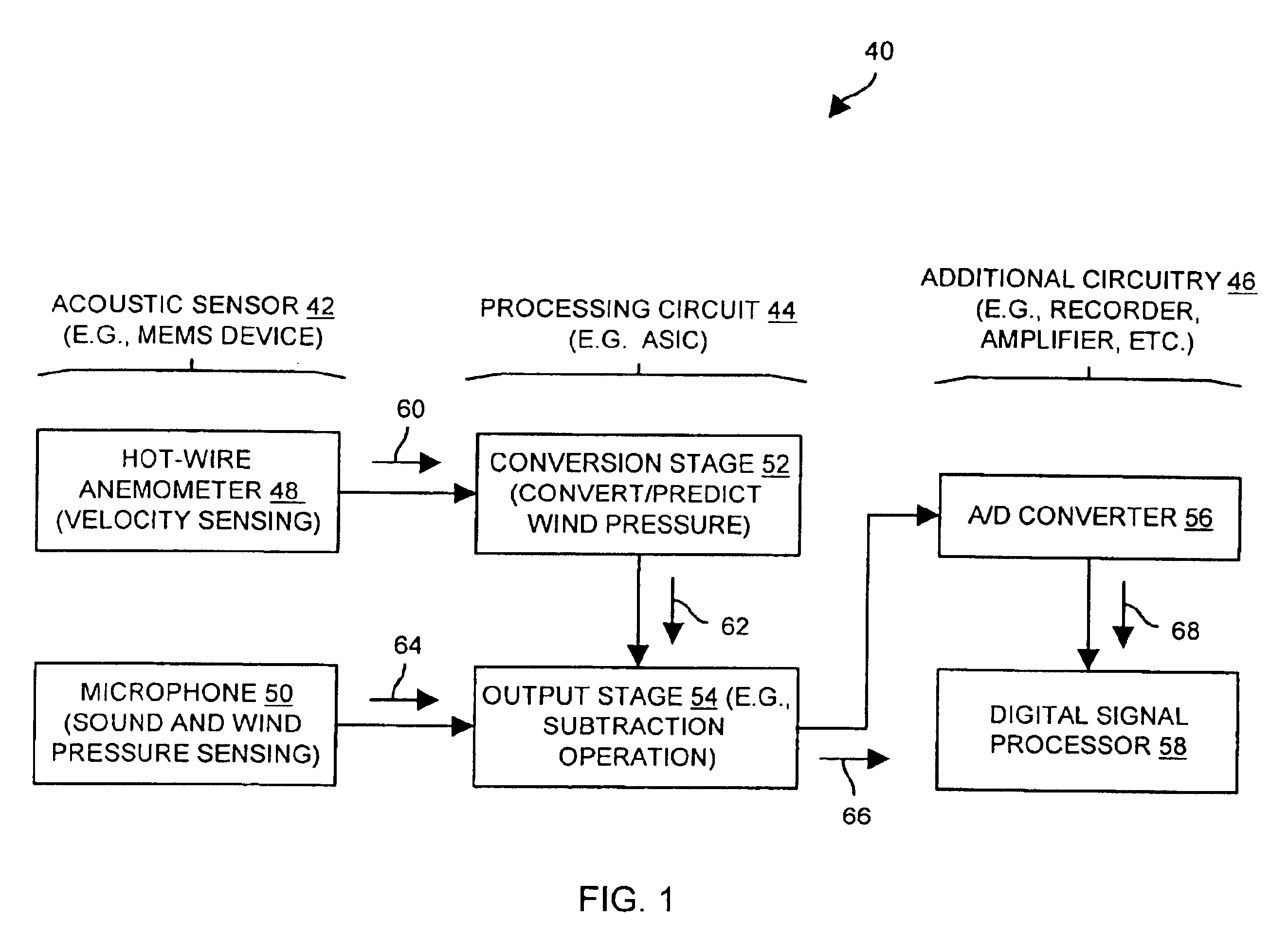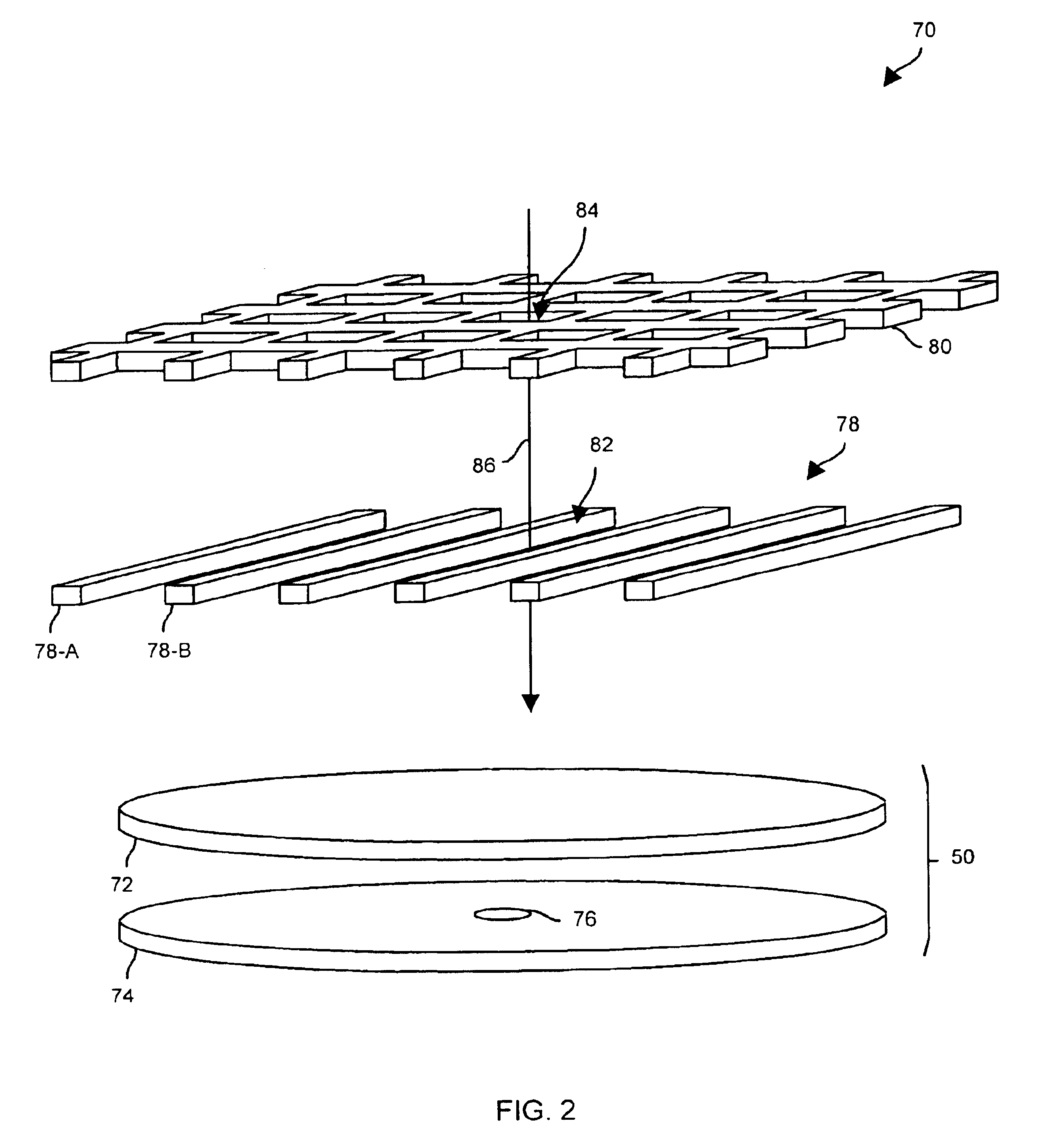Systems and methods for sensing an acoustic signal using microelectromechanical systems technology
a microelectromechanical and signal technology, applied in the direction of piezoelectric/electrostrictive transducers, transducer circuits, vibration measurement in solids, etc., can solve the problems of hindering certain microphone applications, hindering the current trend of microphone and acoustic system miniaturization, and deficiency of conventional approaches
- Summary
- Abstract
- Description
- Claims
- Application Information
AI Technical Summary
Benefits of technology
Problems solved by technology
Method used
Image
Examples
Embodiment Construction
Embodiments of the invention are directed to techniques for obtaining an acoustical signal using microelectromechanical systems (MEMS) technology. For example, sensing elements such as a microphone and a hot-wire anemometer can be essentially collocated (e.g., can reside at a location with a minute finite separation) in a MEMS device. Accordingly, wind velocity as well as sound and wind pressure can be measured at essentially the same location. As a result, a wind pressure signal can be generated based on the wind velocity at that location, and then subtracted from the sound and wind pressure obtained at that location thus providing accurate sound with wind noise removed.
FIG. 1 shows an acoustic system 40 which is suitable for use by the invention. The acoustic system 40 includes an acoustic sensor 42 and a processing circuit 44. The acoustic system 40 can further include additional circuitry 46 (e.g., a recorder, an amplifier, a transmitter, etc.). The acoustic sensor 42 includes a...
PUM
 Login to View More
Login to View More Abstract
Description
Claims
Application Information
 Login to View More
Login to View More - R&D
- Intellectual Property
- Life Sciences
- Materials
- Tech Scout
- Unparalleled Data Quality
- Higher Quality Content
- 60% Fewer Hallucinations
Browse by: Latest US Patents, China's latest patents, Technical Efficacy Thesaurus, Application Domain, Technology Topic, Popular Technical Reports.
© 2025 PatSnap. All rights reserved.Legal|Privacy policy|Modern Slavery Act Transparency Statement|Sitemap|About US| Contact US: help@patsnap.com



